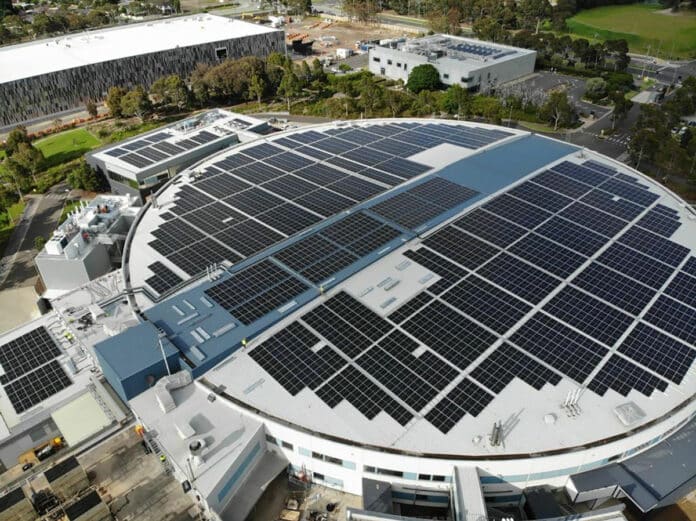More than 3,200 solar panels have been installed across the rooftops of the Australian Nuclear Science and Technology Organisation’s (ANSTO) Australian Synchrotron in Clayton. These panels, which cover an area of almost 6,600m2, including the large and iconic circular roof of the main building that houses the powerful particle accelerator, are offsetting enough power to light up the whole MCG for over five years.
As a result of this installation, ANSTO is expected to save over two million kWh per year while also reducing its carbon footprint by more than 1,680 tonnes of CO2 per year. This is a significant step towards sustainable energy use, and it is encouraging to see organizations like ANSTO leading the way in promoting and implementing renewable energy solutions.
Professor Michael James, director of ANSTO’s Australian Synchrotron, said the benefit of driving down operating costs is paralleled by ANSTO’s ongoing commitment to a greener future.
“This investment in renewable technology is just one way we can meet our own sustainability goals while also contributing to a cleaner and greener environment,” Prof. James said. “Electricity is one of our largest operating costs, so our new solar plant will deliver substantial savings and also act as a buffer against increasing energy overheads in the future. The reduction in our carbon footprint is enough to offset the running of 367 family-sized cars each year.”
The Australian Synchrotron has recently installed a 1,668 kWh system and inverter that will supply part of its total energy requirements. This installation is expected to deliver savings of approximately $2 million over a five-year period to 2029.
Professor Keith Nugent, Director of the Australian Synchrotron, expressed his excitement about this development, stating that the saved running costs will be used to support operations as well as the expansion of their research capabilities and facilities.
“Going solar was a no-brainer. The size of our rooftops, paired with the ample, uninterrupted exposure to sunlight at our location within the Monash precinct, was a major incentive for us to become more energy efficient,” Prof. James said.
“While our science facility operates 24 hours per day, during daylight hours, the new solar plant provides a cyclical way to harness the power of light – from the sun to help power our facilities, that in turn, allows us to generate brilliant beams of synchrotron light that are more than a million times brighter than the light from the sun. Some of those brilliant beams of synchrotron light are even used to undertake research into the next generation of solar cell technology.”
The solar panel installation at the Australian Synchrotron facility covers the rooftops of the main Australian Synchrotron building, the Australian Synchrotron Guesthouse, and the Environmentally Controlled Storage Facility.
The installation of solar panels at the Australian Synchrotron is a step in the right direction towards ANSTO’s goal of reducing grid electricity dependency by 20% by 2035. It’s also a significant contribution towards achieving net zero by 2030, by supplementing power usage with renewable energy technologies.
